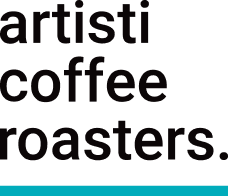Making coffee is a mix of art and science, and with the right tools, you can ensure every cup is a masterpiece. Many baristas, both professional and at-home enthusiasts, wonder how to achieve a consistently great brew. Should you measure your coffee by volume, weight, or just by time?
Let's break down the three main methods for measuring coffee and uncover the best way to get a delicious and repeatable result every time.

Volumetrics: The Scoop and the Shot Glass
For a long time, many coffee makers relied on volumetric measurements. This typically involved using a scoop to measure coffee grounds or a shot glass to measure the liquid espresso.
-
The Scoop: A common tool, a coffee scoop seems simple enough. However, it's a very unreliable way to measure coffee. Why? The density and weight of coffee grounds change based on your grind size and the type of bean you're using. A coarse grind will fill the scoop with less coffee by weight than a fine grind. This inconsistency can lead to unpredictable flavors in your final cup.
-
The Shot Glass: Once a staple for measuring espresso, the shot glass (typically 30ml) also has its flaws. It measures volume, but it doesn't account for the strength of the coffee (TDS - Total Dissolved Solids) or the amount of crema. Since crema is just a foam of carbon dioxide bubbles, its volume can vary dramatically with the age of the beans. Fresh beans create a lot of crema, filling the glass quickly and potentially leading you to pull the shot too early, resulting in a weak, under-extracted coffee.
While they may seem convenient, using scoops and shot glasses introduces too many variables that make it difficult to replicate a great-tasting cup of coffee.
The King of Consistency: Scales
If you're serious about making great coffee, weighing your ingredients with a scale is the single most important step you can take. Scales offer a level of precision that other methods can't match. This is the secret to a professional-grade cup of coffee.
By using scales, you can measure both your dose (the amount of dry coffee grounds) and your yield (the amount of liquid coffee you extract).
-
Weighing the Dose: For espresso, you can measure a precise amount of coffee, say 22.5 grams, into your portafilter. For larger brews like cold brew or batch brew, you can use a ratio to determine your dose. For example, a common batch brew ratio is 1:16 (one part coffee to 16 parts water). If you use 1.2 kg of water, you'll need 75 grams of coffee (1200 / 16 = 75).
-
Weighing the Yield: Instead of relying on a shot glass, you can place your cup on a scale and measure the exact amount of liquid espresso that comes out. A standard espresso ratio is 1:2, meaning you'll aim to extract twice the weight of your dose. So, if you used a 22.5 gram dose, your target yield would be 45 grams.
Scales remove the guesswork and allow you to follow and replicate a specific recipe, whether it's your own or one from a professional barista. This is the foundation of consistency.

The Last Piece of the Puzzle: Time
Once you've mastered weighing your dose and yield, you'll find that time isn't the end-all-be-all measurement you thought it was. It's actually a key indicator.
Time tells you if your recipe worked or not. For instance, if you're trying to achieve that 1:2 ratio (22.5g in, 45g out) and it takes 35 seconds to get there, and the coffee tastes amazing—that 35-second mark is your new target.
However, don't get hung up on a specific number. Time will vary based on your grind size, the age of your beans, and your equipment. If your next shot with the same recipe only takes 25 seconds, it's a sign that your grind might be too coarse. The key is to taste the coffee. If it tastes better at 32 seconds one day, then that's the time you should aim for. This process of tasting and making small adjustments is called dialing in, and it's what separates a good barista from a great one.

How to Achieve a Consistent Brew
To summarize, for the most consistent and delicious coffee, you should:
-
Use scales to weigh your dose (the amount of coffee going in) and your yield (the amount of liquid coming out).
-
Follow a brew ratio (like 1:2 for espresso).
-
Use time as an indicator to know if you're hitting your targets.
By implementing these processes, you'll gain the confidence to create consistently great coffee, whether you're a home coffee enthusiast or a professional barista. Stop guessing, and start measuring for better results.












